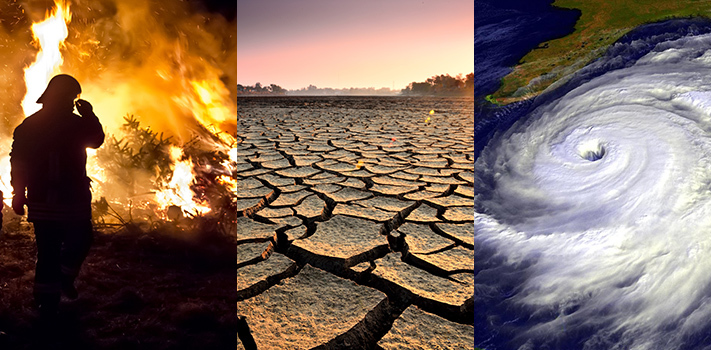When a planet’s surface is warmed to a temperature above what would be without its atmosphere due to trapped radiation from the planet’s atmosphere, this process is referred to as the greenhouse effect. As the Earth’s surface warms, it emits infrared radiation. Some of this heat is absorbed by greenhouse gases such as carbon dioxide, methane, and nitrous oxide, warming the Earth’s atmosphere.

The main gases involved in Greenhouse emissions are Carbon dioxide, from fossil fuel combustion and change of land use. Methane, from natural gas extraction and agriculture, Nitrous Oxide, from fossil fuel combustion, Ozone in the lower atmosphere, from reactions between emissions from transport and industry. The amounts emitted of each greenhouse gas have a different capacity to cause global warming and depends on the lifetime of the gases. The longer the emissions are in the atmosphere, the more time it has to affect a warming influence. Carbon dioxide emissions into the atmosphere from human activities have been on the increase since the Industrial Revolution. These emissions become involved in the natural carbon cycle, a system of the flow of carbon dioxide between vegetation and soils, water and ecosystems and the atmosphere. Growth in population and use of energy per person has led to the rise in carbon dioxide emissions, as more people enjoy a more energy-intensive standard of living.
 Climate change is one of the main problems facing our environment and the earth in general. Evidence is building that impacts are being felt in the form of melting ice caps in the polar areas and increased variability of temperature, rainfall, and storms in virtually all regions, in many places, temperature changes, and sea-level rise are already putting ecosystems under stress and affecting human well-being. How quickly the climate will change in the future depends upon two factors: how much greenhouse gas emissions grow, and how sensitive the climate system is to these emissions. The effect of climate change, on sectors such as food supply, flooding, and water resources, among others, can be calculated. Climate change is expected to have unforeseen implications on where people can settle, build homes for dwelling and cities for work, grow food, and rely on functioning ecosystems for the availed services.
Climate change is one of the main problems facing our environment and the earth in general. Evidence is building that impacts are being felt in the form of melting ice caps in the polar areas and increased variability of temperature, rainfall, and storms in virtually all regions, in many places, temperature changes, and sea-level rise are already putting ecosystems under stress and affecting human well-being. How quickly the climate will change in the future depends upon two factors: how much greenhouse gas emissions grow, and how sensitive the climate system is to these emissions. The effect of climate change, on sectors such as food supply, flooding, and water resources, among others, can be calculated. Climate change is expected to have unforeseen implications on where people can settle, build homes for dwelling and cities for work, grow food, and rely on functioning ecosystems for the availed services.
There is hope, and we must remain optimistic as a change in the political and socio-economic landscapes with a growing effort, and high interest from organizations and groups mobilizing resources to handle climate change and its effects on the environment and our daily life are on the rise. A global approach to tackling climate change will go a long way to providing sustainable measures, mitigations, and solutions for climate and environmental challenges of today and those of the future.